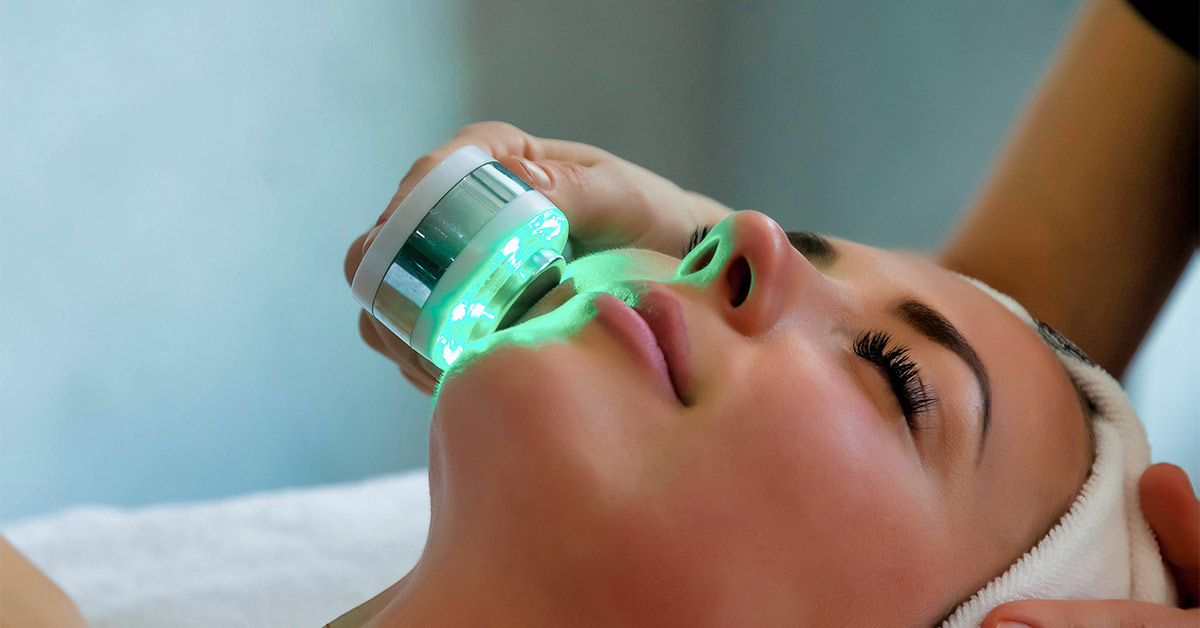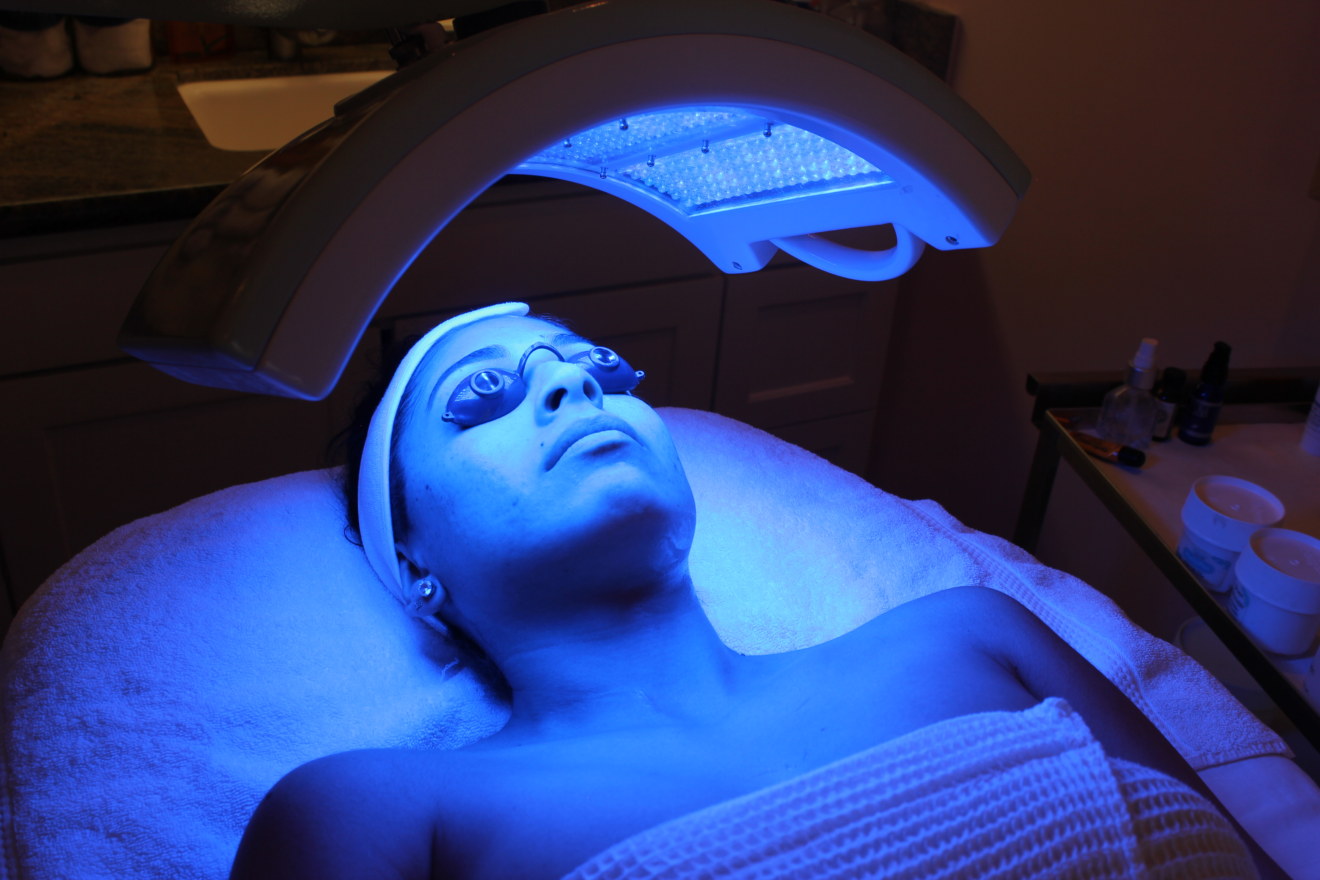Light therapy, also known as heliotherapy or phototherapy, is a light treatment that provides a therapeutic dose of bright light to relieve many symptoms pointing out diverse body issues. Even though many use light therapy to improve skin textures and treat skin conditions such as rosacea, such therapy type is known to treat seasonal affective disorder (SAD).
With light therapy gaining immense popularity these past few years, many types of light boxes made their way to the top of the market. But do all of them work the same, and how long does it take for light therapy to work on average?
The following article will answer all that and provide more information on bright light therapy, heliotherapy, and phototherapy. Sit back and read on!

Source: foreo.com
What Is Light Therapy
Light therapy, often known as phototherapy, heliotherapy, or bright light treatment, is a procedure acknowledged by scientific medicine for treating various disorders. Exposure to external daylight or specific interior illumination sources is included. That type of procedure is widely known for its success in treating winter depression, also known as seasonal affective disorder (SAD).
While light therapy could help you treat SAD, it’s also shown benefits in managing sleep difficulties and helps in treating other kinds of depression. It is frequently helpful when treating depression as it works on improving your biological clock and balances your serotonin levels in the brain, among other things.
How Does Light Therapy Work
Think of light therapy as an exercise, not for your body, but for your cells. Once you plug in the box, it will emit bright therapy, miming the outdoor light, making the brain cells release greater quantities of serotonin and helping lift your mood.
Generally, the box needs to provide exposure of 10,000 lux of light and produce a little UV light. But what do you need to do to see the effects?
For starters, maintaining regular sleep timing, going to bed, and waking up at scheduled intervals, for example, 10:30 p.m. to 6:30 a.m., is essential during light treatment. Second, you need to have a designated time to use the lightbox.
We saw that being exposed to the light for about 20 to 30 minutes in the first hour of waking up and at a designated distance from the box showed the best results. You can use light therapy when eating breakfast, reading, catching up on emails, etc.
Rember, your eyes must be open for the reaction. You can’t sleep while exposed to it and mustn’t look directly at the rays.
How long does it take for light therapy to work?
We’ve finally got to answer the question you’ve been here all along. How long does it take for light therapy to work? Inner improvement typically begins within a few days, and symptoms should significantly improve by two weeks.
Keep in mind that this is not a one-time treatment and that you can expect results from the moment you begin therapy. This is a gradual process, with the best results visible after five weeks. However, each body is unique, meaning some might see faster results than others.
If the symptoms don’t improve after ten to 14 days, consider spending up to one hour per day in front of the light, either in the early morning or in the late afternoon. Don’t use the light source right before bedtime, as the exposure can cause insomnia. If none of this works, check with your physician.
When light therapy shows a positive reaction, some individuals like to experiment with the schedule and duration of daily exposure—for example, lowering the treatment to 15 minutes or using the light at a more convenient time, like late afternoon. We recommend making one adjustment at a time for two weeks. If symptoms reappear, return to the original exposure plan.
Benefits of Using Light Therapy Treatment
Light treatment influences brain chemicals associated with mood and sleep. Hence decreasing SAD symptoms. A light therapy box might help you overcome different forms of depression, sleep difficulties, and other diseases. This kind of treatment is also known as phototherapy or bright light therapy.
According to research, light treatment can help lessen and improve some skin problems and disorders. However, to observe changes in your skin, you must get monthly treatments. Professional studio light therapy is more potent than the now popular at-home devices, making it more efficient.
The light activates collagen, which is crucial for the healing process of the skin. Those who have had cosmetic rejuvenation surgery have also received light therapy after the treatment. According to research, this type of procedure reduces redness, inflammation, and bruising while also accelerating the process of healing.
Side Effects of Light Therapy Treatment
Due to light therapy, individuals may experience irritation, headache, sore eyes, sleep disruptions, and restlessness. Minor visual side effects are not uncommon, although they resolve quickly. As a result, establishing the correct dose and duration of light is necessary to reduce the likelihood of such adverse effects.
For better ease of mind, you can consult with a doctor should any of the above-mentioned adverse effects occur. But you can try to deal with the less minor side effects at home. For instance, if you experience a headache or eyestrain, keeping the light at a further distance might be best, or never use the light before bedtime to prevent insomnia.
Light-induced photosensitivity reactions include redness, itching, and burning; fortunately, these reactions usually diminish three weeks following the therapy. Allergic reactions, including rashes and eczema, can emerge within several hours after interaction with the cream.

Sources: theclinicroom.co
Who Should Refrain From Using Light Therapy?
The main contraindications for using light therapy are retinal illnesses, diabetes, and the use of photosensitizing pharmaceuticals such as lithium, melatonin, antipsychotic drugs, and some antibiotics. People who are predisposed to skin cancer or autoimmune diseases refrain from using this type of therapy.
Conclusion
So, how long does it take for light therapy to work? We concluded that people should expect to see results in 10 to 14 days. But, even if there’s no visible sign, remember- each body is unique and may need more time to respond to the treatment.
The bottom line is, before purchasing a lightbox, consult with a doctor. This way, you may address potential health concerns while also learning about light intensity, the number of sessions and their duration, and other factors contributing to effective light therapy.

Hello! I’m Nicky Rodgers.
Almost a decade ago, I got excited about the idea of employing alternative methods like red light therapy to create a healthier life.
To learn more about it, I did my Certified Light Therapist course from Photonic Therapy Institute and started looking into the intricacies of how light therapy influences several bodily processes. Before I knew it, my interest had become an obsession which resulted in this extensive blog.
Here, I offer countless well-researched articles to help you understand the benefits and uses of light therapy. I hope this information gives you a head start in your wellness journey.
